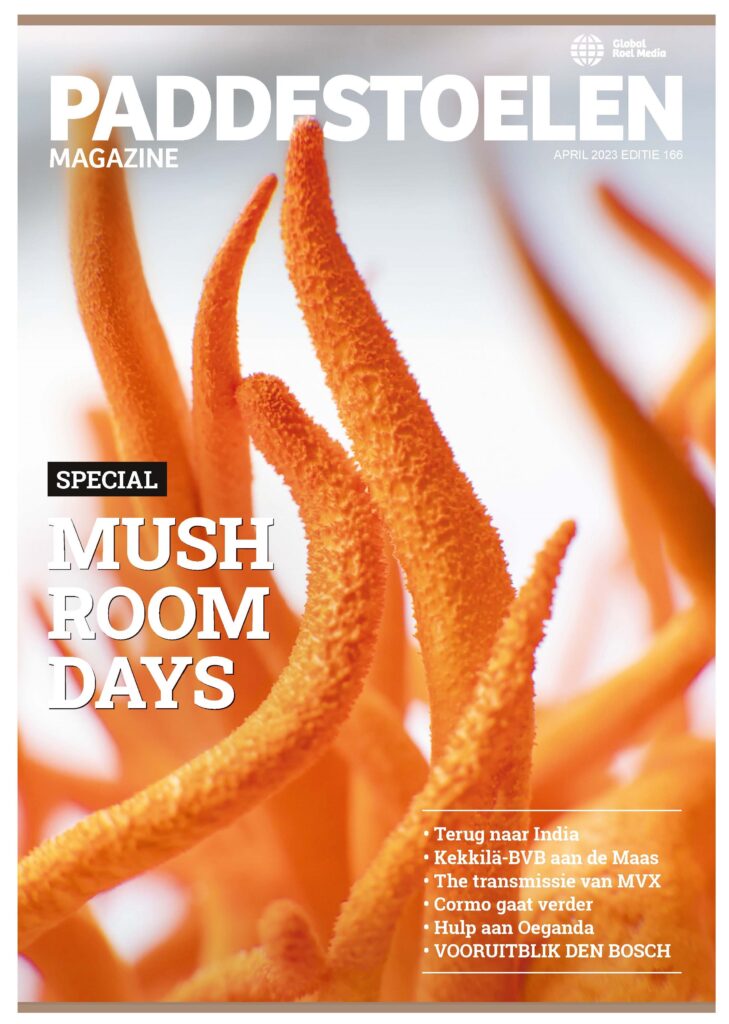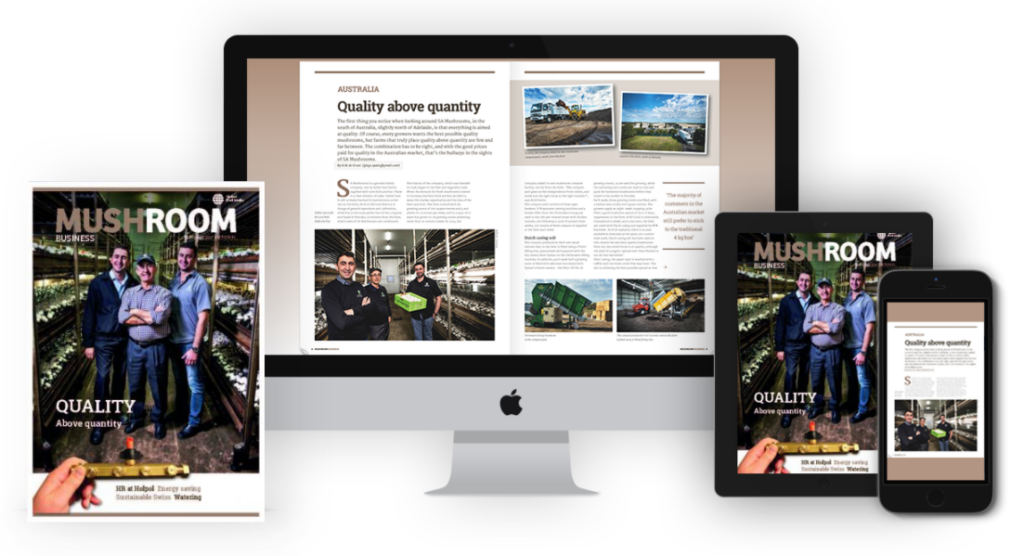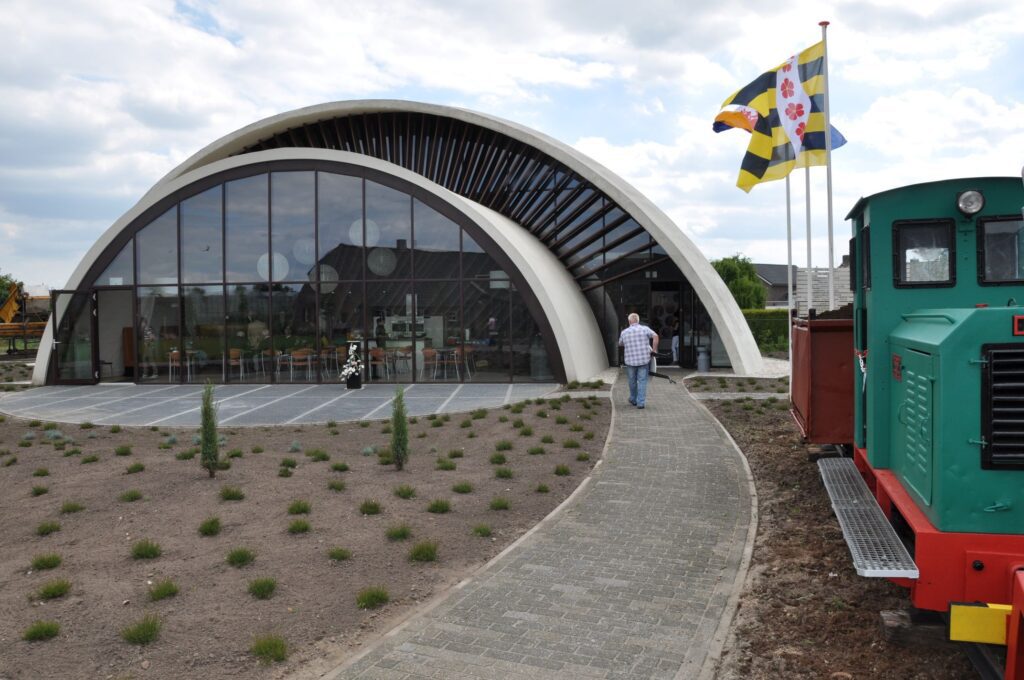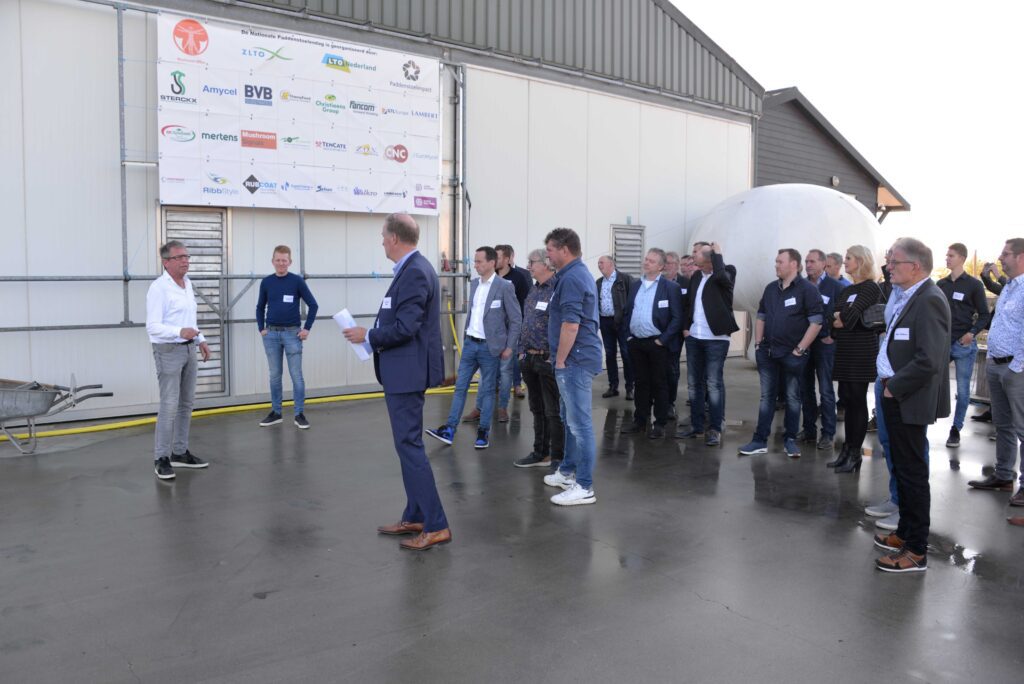During harvesting the number of fruit bodies that develop has a huge influence on the mushroom cost price. If too many are allowed to develop, the picking performance will drop. The formation and later development of fruit bodies depends on many different factors. This tip discusses various items that are important for the first flush.
The number of heads ultimately produced is partly determined during filling. The mushroom strain grown is the first important aspect.
The small hybrid which is rarely grown is the U3 (also: X13 S516). Most farms grow intermediate hybrids (X20 A2100 S512). The A15 (also: 737) is between the S512 and the U1. The S608 (X6 A200) and the U1 belong to the large hybrids. The smaller the hybrid the more spontaneous fruit body formation and growth is.
At filling casing soil is applied immediately. The coarser (and wetter) the casing soil is placed on the bed, the less mycelium will form. Turning the cac-axle as slowly as possible during cac-ing will also have damage the casing soil structure less. Less mycelium in the casing soil will result in less fruit bodies.
Ruffling or not also results in huge differences in the number of fruit bodies. When ruffling is done the material is spread less and fruit bodies will develop more evenly. The biggest advantage of ruffling is that it is easier to predict the first harvesting day.
The whiter the casing soil surface, the easier the number of mushrooms can be controlled. Fewer pieces will be the result. It is however essential to prevent the temperature in the growing room fluctuating, as this increases the risk of dehydration. In other words: make the microclimate as small as possible so it is easier to regulate using the macroclimate (room climate).
Blow down also has a big influence on the final number of mushrooms. The quicker blow down is done the more fruit bodies will grow and develop. During mycelium growth in the casing soil try to keep the compost temperature well controlled at 25-255oC. Keep the compost temperature towards the recovery phases at 245 to 25oC, so the air temperature can easily be set to 20-22oC during recovery, without the compost temperature rising to 28oC.
When blow down is started with a compost temperature of 26-27oC, the difference between the air and compost temperature is not extremely high. If that is the case, evaporation is higher and large numbers of fruit bodies will be formed at that moment. If the compost temperature is 28-29oC, it makes sense to set the circulation higher and/or set the air temperature to 18oC. During this phase it is important to maintain a high RH (above 95%) in the growing room. This lower air temperature must be maintained until the compost temperature starts dropping. When compost temperature has dropped, the air temperature can be reset to the normal blow down position.
The climate factors air temperature RH and CO2 also play an influential role. A general rule is: the smaller the stages during blow down, the better the spread will be. CO2 has the least crucial influence here while temperature has the greatest influence during blow down- both the speed and how high the end temperature is. For example, with strain A15 the air temperature during blow down when fruit bodies are forming may drop below 19oC, otherwise too many fruit bodies will occur. The most important thing to bear in mind to prevent excessive fruit body formation and development is to ensure there is not too much evaporation.
Mark den Ouden, C point






